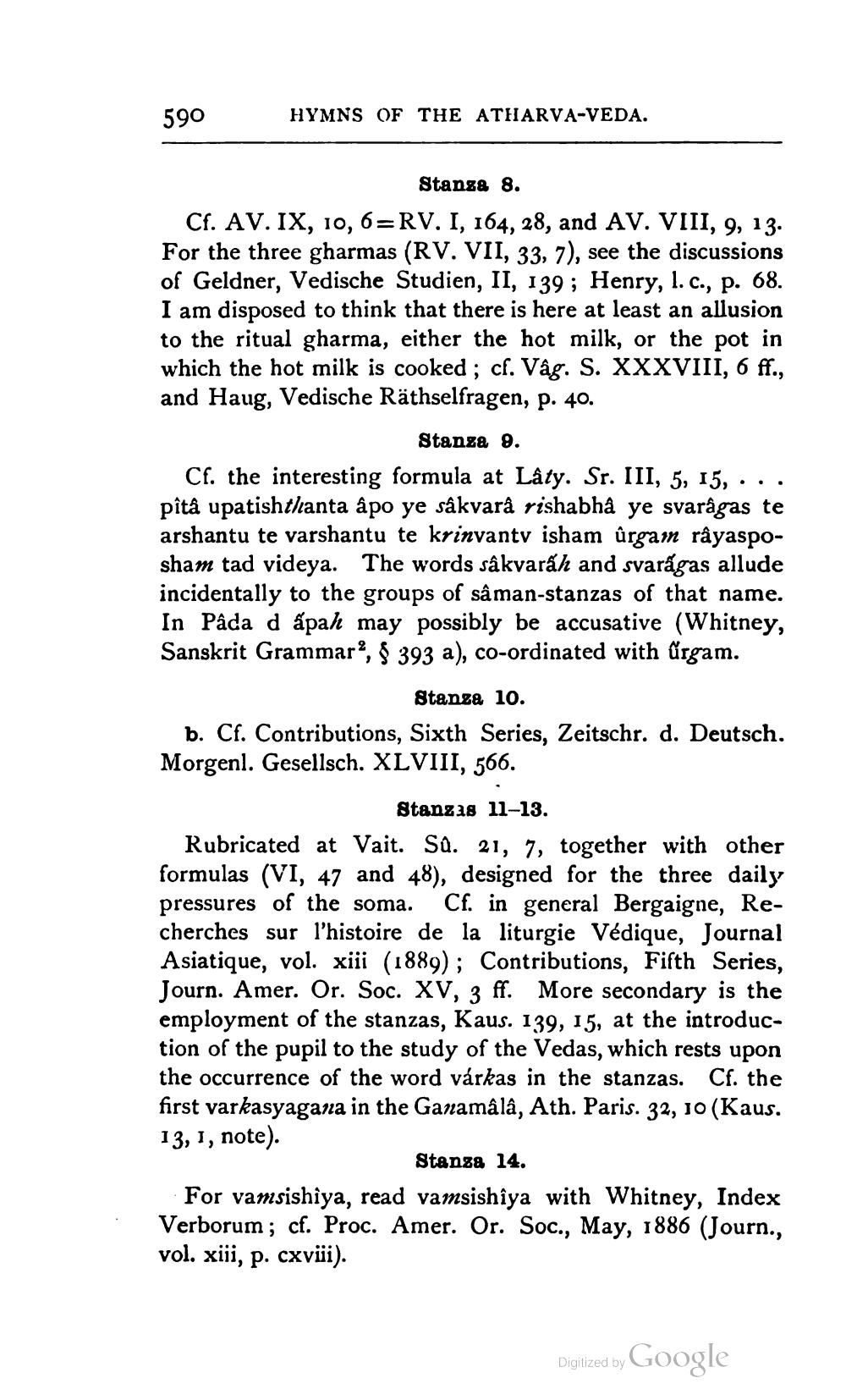________________
590
HYMNS OF THE ATHARVA-VEDA.
Stanza 8.
Cf. AV. IX, 10, 6=RV. I, 164, 28, and AV. VIII, 9, 13. For the three gharmas (RV. VII, 33, 7), see the discussions of Geldner, Vedische Studien, II, 139; Henry, l. c., p. 68. I am disposed to think that there is here at least an allusion to the ritual gharma, either the hot milk, or the pot in which the hot milk is cooked; cf. Vâg. S. XXXVIII, 6 ff., and Haug, Vedische Räthselfragen, p. 40.
Stanza 9.
Cf. the interesting formula at Lâty. Sr. III, 5, 15, pîtâ upatishthanta âpo ye sâkvarâ rishabhâ ye svarâgas te arshantu te varshantu te krinvantv isham ûrgam râyasposham tad videya. The words sâkvarah and svaragas allude incidentally to the groups of sâman-stanzas of that name. In Pâda d apah may possibly be accusative (Whitney, Sanskrit Grammar2, § 393 a), co-ordinated with urgam.
Stanza 10.
b. Cf. Contributions, Sixth Series, Zeitschr. d. Deutsch. Morgenl. Gesellsch. XLVIII, 566.
Stanzas 11-13.
Rubricated at Vait. Sû. 21, 7, together with other formulas (VI, 47 and 48), designed for the three daily pressures of the soma. Cf. in general Bergaigne, Recherches sur l'histoire de la liturgie Védique, Journal Asiatique, vol. xiii (1889); Contributions, Fifth Series, Journ. Amer. Or. Soc. XV, 3 ff. More secondary is the employment of the stanzas, Kaus. 139, 15, at the introduction of the pupil to the study of the Vedas, which rests upon the occurrence of the word várkas in the stanzas. Cf. the first varkasyagana in the Ganamâlâ, Ath. Paris. 32, 10 (Kaus. 13, 1, note).
Stanza 14.
For vamsishiya, read vamsishîya with Whitney, Index Verborum; cf. Proc. Amer. Or. Soc., May, 1886 (Journ., vol. xiii, p. cxviii).
Digitized by
Google




